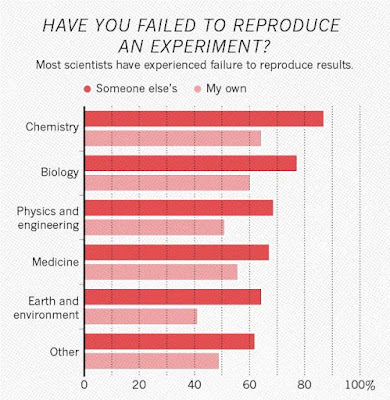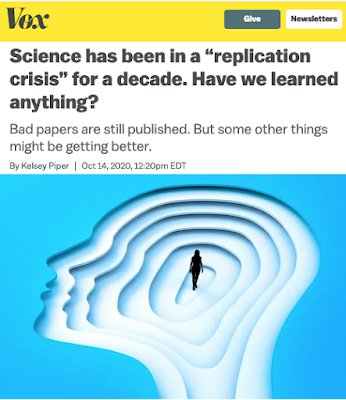Joe Hillshoist » Thu Dec 16, 2021 12:42 am wrote:conniption » 15 Nov 2021 00:45 wrote:The most important event took place in 2000, when I met Dr. Ryke Geerd Hamer.
The guy who reckons modern medicine is a Jewish plot again st Western European Civilisation?
Yeah...well, that's what they say, alright. It took me days of wading through Hamer smears and ridicule before I finally stumbled upon the website on German New Medicine® (Germanic New Medicine®) honoring his work. I don't know much about Hamer or GNM, but it certainly looks to be worth exploring when time allows.
Anyway, here's a bit on Hamer from the WHALE website.
One thing I do know, if you are an alternative healer or practitioner - you never ever say you have found a cure for cancer.
Joe >>
The relationship between the brain and bodily health is complicated.
Bioflora are vital. Your body is like a planet colonised with bacteria and other microbes. Their health and your health are intertwined. Unhealthy bacteria are associated with unhealthy people.
To be sure...
Excerpt from here: https://www.globalresearch.ca/our-speci ... es/5763670Chapter IThe Microbiome and The Virome
In this chapter, we will discover that, contrary to what Western allopathic medicine has been teaching us for over a century, viruses are not here to attack our cells or harm us in any way. In fact, rather than being our mortal enemies, viruses are actually our friends.
Does this assertion sound too outlandish to be true? If your answer is “yes,” I wouldn’t be surprised. But I believe if you were to study the intricate ecosystem of microorganisms that make up the microbiome and delve into the fascinating world of the virome, you would come to the same realization I finally did: We are literally swimming in a vast sea of viruses, which, from the beginning of time, have been essential for life to form and flourish on this precious earth. The information communicated by these viruses helps all species of life survive—even thrive.
The Microbiome
The microbiome (derived from the Greek words micro, meaning “small,” and biotikos, meaning “pertaining to life”) is a massive ecosystem consisting of trillions of microorganisms. Incredibly, some 40,000 species of bacteria, 300,000 species of parasites, 65,000 species of protozoa, and between 3.5 million and 5 million species of fungi inhabit the environment around us and live in or on the human body. This complex world of microorganisms continually secretes a sea of viruses, which serve as a communication network for the bacteria, parasites, protozoa, and fungi. And, as we will discover shortly, these viruses have always been here to help us, not hinder us. In other words, they are life-affirming, not death-inducing.
Here’s a hint of the microbiome’s intricacy, incredible diversity, and infinitesimal size: The number of genes within the fungal kingdom is at least 125 trillion! The human genome, by comparison, consists of a mere 20,000 genes. A fruit fly has 13,000 genes, a flea 31,000. Thus, in terms of genetic complexity, the human genome has just a tiny fragment of genetic information compared to the vast world of genomic information contained within the microbiome.
One intriguing aspect of the microbiome is its symbiotic communication network, which allows the transmission of protein information from one microorganism to one another. For example, the mycelial network (a matrix of fine white filaments) in fungi allows the fungi to communicate with each other over distances that can stretch to several kilometers. These mycelial structures are capable of transferring mineral and protein resources more than a kilometer. How? They use light energy and electrons that flow through the pathways within the soil system. In this way, the microbiome helps plants and other multicellular life forms flourish. It is no exaggeration to call the mycelial network in the fungal kingdom the literal “brain” of the planet. Incidentally, all of the tiny, intelligent organisms that make up the microbiome are powered by the biophotonic energy of the sun.
Hard as it is to fathom, at least 1.4 quadrillion bacteria and 10 quadrillion fungi live inside the human body. Within the human colon alone are 3.8 x 1013bacteria cells. Every single organ in the body, including the brain, has its own microbiome. The purpose of the bacteria and fungi in our bodies is to nourish and nurture our cells, keeping us healthy and in equilibrium with the larger microbiome surrounding us.
The Virome
The virome is the immense world in which Mother Nature’s messengers exist. It is composed of trillions upon trillions of viruses produced by the aforementioned microbiome’s bacteria, parasites, protozoa, and fungi. The average adult human body contains 1 x 1015 viruses. By contrast, in the air enveloping the earth there are 1 x 1031viruses; in the earth’s soil there are 2.5 x 1031 viruses; and in the earth’s oceans there are 1.2 x 1030 viruses. To provide some perspective on these awe-inspiring numbers, 1 x 1031is 10 million times greater than the number of known stars in the entire universe.
Simply put, a virus is genomic information, either DNA or RNA, wrapped in a protein envelope. The small strands of protein protruding outward from the outer surface of a virus’s protein envelope are called spike proteins. Viruses are not living organisms. They do not produce their own fuel. They have no metabolism for producing energy. And they cannot reproduce.
Viruses have been traveling globally, above the atmospheric boundary layer, for millions of years, long before machines for air travel were invented. Their genetic codes have been blanketing the earth for eons, creating biodiversity and allowing for adaptation throughout the ecosystem. By adaptation, I mean that viruses are always seeking to adapt their genetic codes for the purpose of creating resilient health in all of the planet’s life forms. It is ridiculous to suggest that, in order to travel from one region of the globe to another, a virus must hop on an aircraft, as RAND’s National Security Research Division would have us believe.
Furthermore, viruses—including coronaviruses—do not come in waves and then disappear without a trace, only to miraculously reappear later in the same spot or a different one. Instead, viruses never leave, never expire. They inhabit every element in the environment around us. In short, they are omnipresent and ever-present.
Our relationship with particular viruses can change as a consequence of our harmful actions toward nature. Whenever humans poison and pollute the air, soil, and water, they create an imbalance between humanity and the virome—an imbalance that can cause us to come into disequilibrium with a particular virus.
Unfortunately, the allopathic medicine regime, which plutocrats John D. Rockefeller and Andrew Carnegie forced on most of the world with their 1910 Flexner Report, still has a large segment of the scientific community believing that bacteria, fungi, and viruses are our enemies.
The foundation of Rockefeller’s allopathic medicine scheme is Louis Pasteur’s flawed “germ theory,” which claims that outside microorganisms such as bacteria and viruses attack, invade, and infect the body, thereby causing disease. Though he had no formal education in science, most of the Western world credits Pasteur (1822–1895) with playing a fundamental part in establishing what we call “modern medicine”—a paradigm that traces the origin of each disease to a single germ. Without Pasteur’s theory, most modern drugs would never be produced, promoted, or prescribed—a fact that explains why today’s medical establishment and its codependent pharmaceutical industry refuse to recognise their flaws or own up to their ineffectiveness.
By contrast, “terrain theory,” which was initiated by Claude Bernard (1813–1878) and later built upon by Antoine Béchamp (1816–1908), alleges that the terrain—that is, the internal environment of the body—and not an external germ determines our health or lack thereof. What Béchamp referred to as “terrain” is very close to what modern medicine has now termed the innate immune system. As we will see in the following paragraphs, Béchamp was definitely on the right track in discovering how the human body really interacts with the outside environment.
Unlike Pasteur, Béchamp did have an academic background in science. He believed disease to be a biological result of the changes that take place in the body when its metabolic processes become imbalanced. When the body is in a state of imbalance, Béchamp alleged, germs become symptoms that in turn stimulate more symptoms, which eventually lead to disease.
Although Béchamp was moving in the right direction with his terrain theory, Rockefeller’s germ-dependent pharmaceutical tyranny has prevailed, due largely to substantial infusions of money, which Rockefeller and Carnegie gladly supplied in the form of grants to universities, hospitals, and medical research facilities. Their “philanthropic” largess, which easily exceeded $100 million ($2.9 billion in current dollars), enabled them to influence the policy of the entire US medical establishment and eventually most of the Western nations, steering them toward an exclusively chemical-based allopathic regime.
I contend in this book that, contrary to what Rockefeller medicine has been teaching us for over one hundred years, viruses are not here to attack our cells or to harm us in any other manner. On the contrary, the DNA and RNA genetic molecular information contained within the viruses are literally the building blocks of life on earth. To use a modern analogy, we can think of a virus’s information stream as a software update carrying important molecular intelligence that can be uploaded, when required, to any cell of a living multicellular organism—including any one of the 70 trillion cells contained in the human body. Our cells regulate which new genomic information is received and which information is not received. The viruses are simply seeking to adapt to the cells for the purpose of creating resilient human health.
Innate and Adaptive Immunity
A word here about the immune system. There are two kinds of immunity: innate and adaptive...continues...
https://www.globalresearch.ca/our-speci ... es/5763670
The entire book is worth reading.











